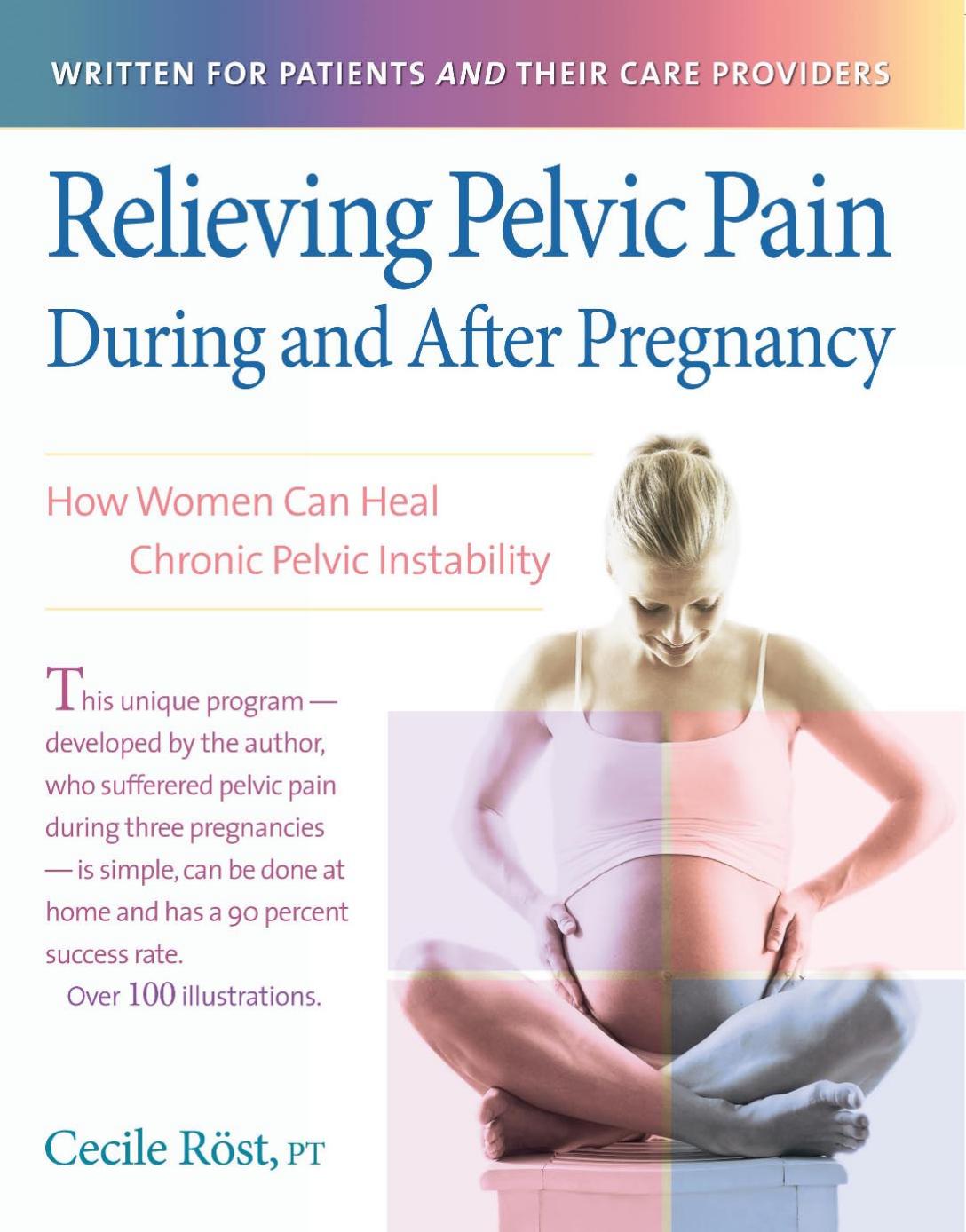Relieving Pelvic Pain During and After Pregnancy: How Women Can Heal Chronic Pelvic Instability by Cecile Rost

Author:Cecile Rost
Language: eng
Format: mobi, pdf
Tags: &NEW
ISBN: 9780897934800
Publisher: Hunter House
Published: 1998-01-02T00:00:00+00:00
Risk f ac tor s
101
to lift things (Don Tigny 1995). The self-bracing model implies that the pelvis is most stable when the back is in a normal lordotic curve and the pelvis is rotated slightly backward, as occurs when you bend your knees slightly while standing.
13.1. Joint compression model (Source: Vleeming et al. 1995) During pregnancy the form-closure model (see Figures 13.1 and 13.2A) is slightly disturbed by the ligamental laxity of the SI joints; extra force closure is needed. Many SI-related complaints during pregnancy are provoked by forward tilting of the trunk. If the stabilizing muscles do not provide enough support, the self-bracing mechanism will no longer work as efficiently and the sacrum will begin to “hang” or glide unilaterally toward the stomach, causing sacroiliac subluxation (see Figure 13.2B). The sacrum rotates on a longitudinal/oblique axis if there is a difference in laxity between the two SI joints, causing pain in the lower back or somewhere in or around the pelvis. Form and force closure are both important in preventing the sacrum from gliding into an unnatural position, thus disturbing the normal alignment of the pelvis.
A
B
13.2. Horizontal view of the SI joints
a. Normal alignment
B. one-sided hypermobile SI joint due to weakened muscles (here the ilium is shifted forward)
102
Rel ie v ing Pelv ic Pa in DuRing a nD a f t eR PRegn a nc y Delivery
A flexed position of the legs during birth has been described as a possible cause of PRP (Mens et al. 1996). The research does not include further distinctions, such as a description of how the legs were flexed, whether the women held their legs themselves, if another person held their legs, or if they were placed in stir-rups. After talking with a midwife, I realized that there is a vast difference between the aforementioned three positions.
If the woman holds her own legs, she causes a nutation of her sacrum; this will enlarge the birth canal and facilitate delivery (see Figure 13.3). Pelvic symmetry is likely to remain intact. If her legs are placed in supports or held back by another person while the woman pushes during delivery, she may react by pushing her legs down and away from her. Doing this causes a counternutation shift and the birth canal narrows. In this case, delivery will be hindered. Further, in the case of two helpers, each helper may use different amounts of strength to hold his or her assigned leg, which may twist the pelvis.
13.3. Nutation expands the birth canal.
For most women, delivery is uncomplicated and does not result in pelvic pain (Engelen et al. 1995). A rupture of the pubic symphysis takes place in as few as one in twenty-two hundred deliveries and heals quickly. When the pubic symphysis heals properly, there is no increased risk of a Caesarean section during a future pregnancy (Schwartz et al. 1985). (One disadvantage of a C-section is that the procedure involves severing abdominal muscles. This slows the healing and strengthening of these stabilizing muscles; as a result, the excessive motion of the sacrum may be a problem for a longer period of time.
Download
Relieving Pelvic Pain During and After Pregnancy: How Women Can Heal Chronic Pelvic Instability by Cecile Rost.pdf
This site does not store any files on its server. We only index and link to content provided by other sites. Please contact the content providers to delete copyright contents if any and email us, we'll remove relevant links or contents immediately.
Name Book, The: Over 10,000 Names--Their Meanings, Origins, and Spiritual Significance by Astoria Dorothy(2842)
Tone Your Tummy Type by Denise Austin(2638)
The Expectant Father by Armin A. Brott & Jennifer Ash(2172)
The Women's Health Fitness Fix by Jen Ator(2136)
The Coregasm Workout by Debby Herbenick(2133)
Expecting Better by Emily Oster(2087)
The Ultimate Guide to Anal Sex for Women by Tristan Taormino(2074)
She-ology by Sherry A. Ross MD(1979)
The Hite Report on Shere Hite by Shere Hite(1961)
Woman: An Intimate Geography by Natalie Angier(1843)
8 Steps to Reverse Your PCOS by Fiona McCulloch(1833)
Birth by Tina Cassidy(1804)
The Female Brain by M.D. Louann Brizendine(1796)
Women & the Weight Loss Tamasha by Diwekar Rujuta(1723)
101 Get-Lean Workouts and Strategies by Muscle & Fitness(1723)
50 Ways to Soothe Yourself Without Food by Susan Albers(1675)
The Big Booty Blueprint: Your Guide To A Bigger Butt In Less Than 12 Weeks by Bella Rahbek & Brandon Carter(1568)
Unleash the Power of the Female Brain: Supercharging Yours for Better Health, Energy, Mood, Focus, and Sex by Daniel G. Amen M.D(1495)
The overachievers by Robbins Alexandra(1492)
